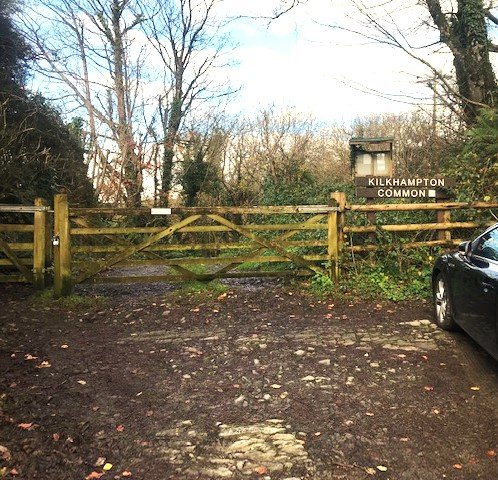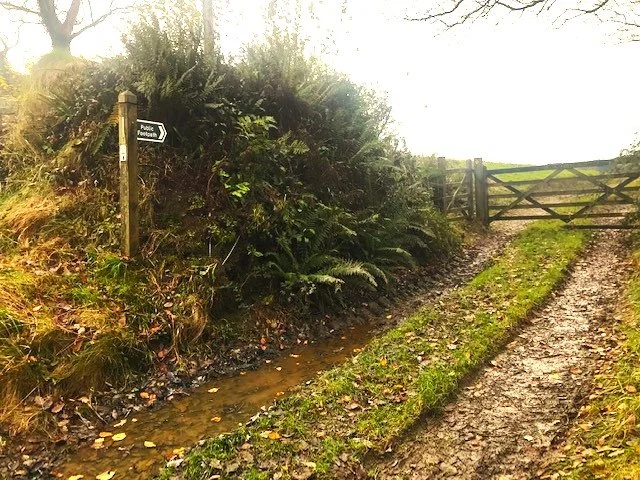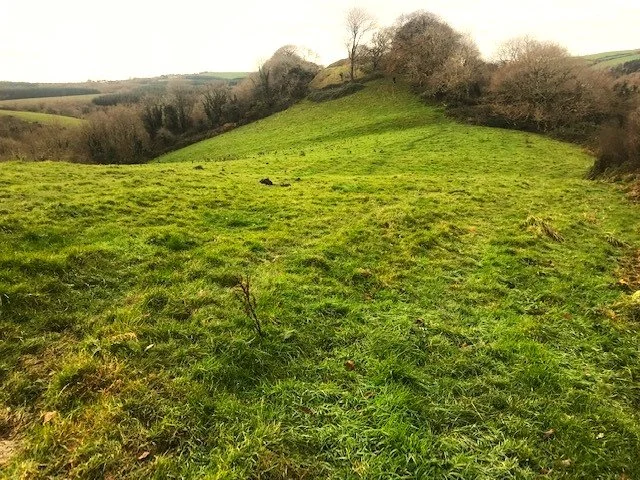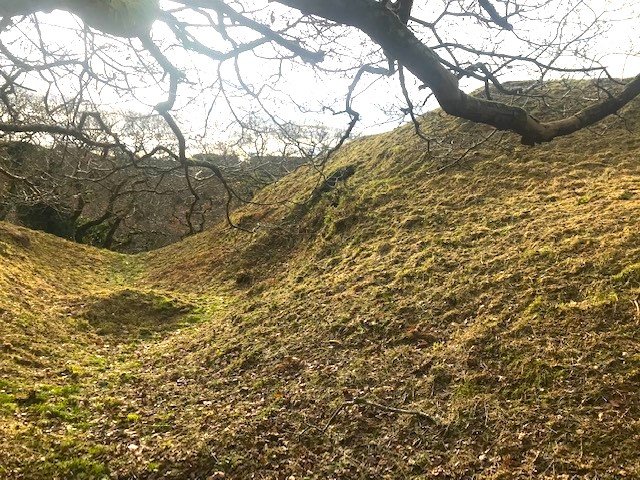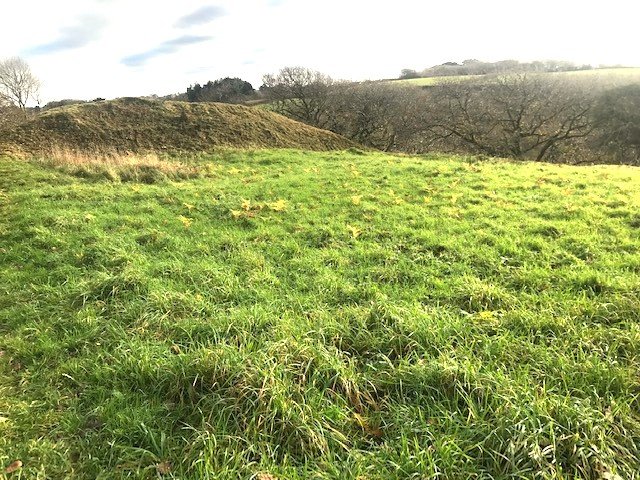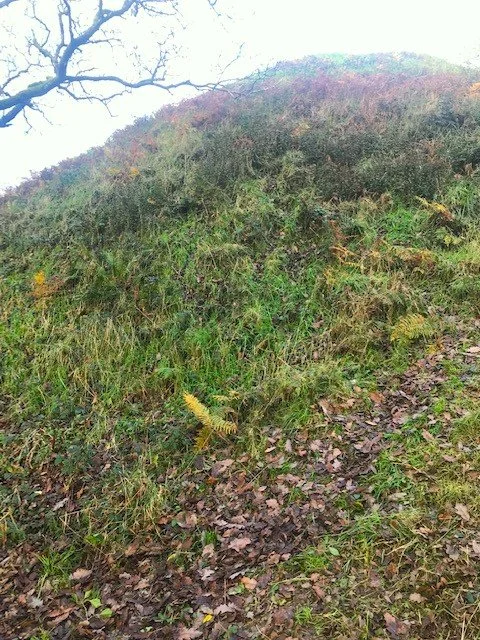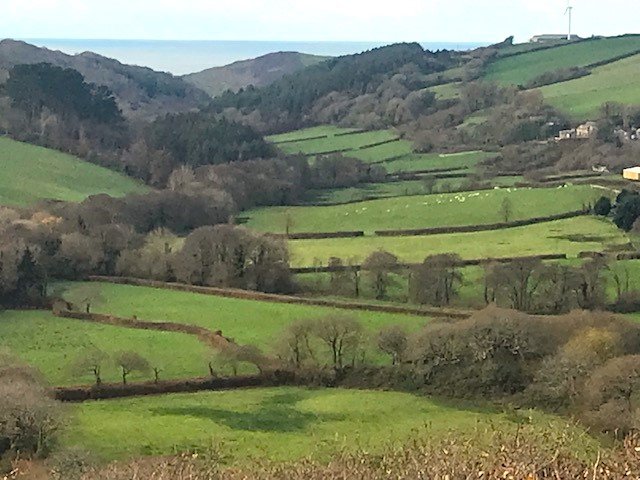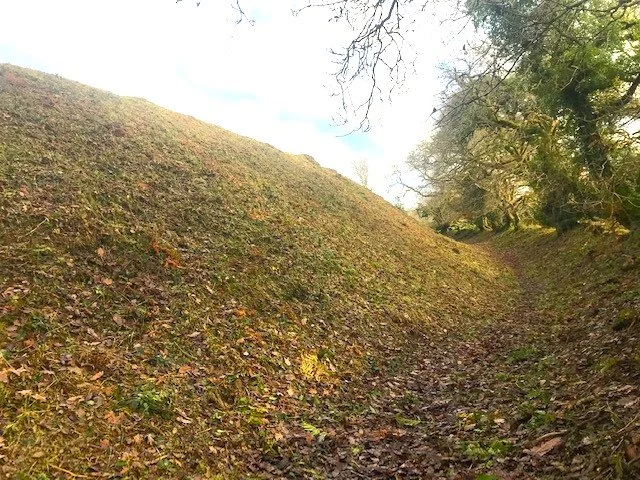Kilkhampton Medieval Castle
Discovering the Castle
Approach and Parking:
Parking at the castle area is limited but it is only a short walk down from the village, so you may prefer the convenience of walking down to the footpath entrance. This is an enjoyable walk and provides the opportunity to appreciate its strategic location. Alternatively, there are a few spaces for parking at the entrance to the Common.
Approaching the village from the south on the A39 pass the church on your left and very shortly after there is a slip road into the small square with West Street in front of you. It is the walk down West Street that will take you to the castle and Kilkhampton Common; both not to be missed walks.
The Castle
It is recommended that you read the short history about the period know as The Anarchy before visiting the castle (Go to Menu, Bude, Local History and select Kilkhampton and the Anarchy).
This civil war between Empress Matilda and King Stephen became very much a question of castle sieges, no one wanted full frontal battles; this castle, if well provisioned, would have been very difficult to attack with men or machine, because of its position and extremely difficult approach terrain.
Empress Matilda had married Geoffrey, Count of Anjou and her supporters were called the Angevins. Much of their support came from the West Country and South Wales. It is no surprise, therefore, that Robert of Gloucester, Matilda’s main supporter and owner of land at Kilkhampton, should build a castle here, maybe as a safeguard should things go bad.
As this castle was built in such an inaccessible location it has been protected from farming and farm animals. It is therefore a prime candidate for further research, and it is schedule for such studies in the near future.
Here is a plan of the castle as it exists today.
The castle is important archaeologically as it is unusual in that it has a motte and two baileys, surrounded by a large ditch. Even more strange is the fact that a castle of similar design was commenced, if not finished, just a few miles to the south at Launcells, near Stratton.
It is hard to imagine that this was not the site of an earlier Iron Age or at least Romano-British settlement. Equally, during Saxon times King Egbert held land in Kilkhampton, which he later left to the Bishop of Sherbourne. So this site may have had many uses before becoming a back-up for the Angevin cause.
Kilkhampton Common is a five minute walk from the village, or a short drive along West Street, which is quite narrow.
From here it is a 4 minute walk to the entrance to the castle grounds.
This is the entrance to the castle grounds just down from the Common parking area. The castle is just off to the right.
If you have walked down to the castle from Kilkhampton you will already appreciate how difficult this would be to attack and that’s before you were met with palisades and multiple ditches.
The is the view west towards the castle and the remains of an outer banking is apparent. Beyond the central lone tree is the ditch leading to the outer bailey.
This the slope from the ditch leading up to the outer bailey. Presumably, the mound was a further obstacle to any attempt to reach the motte? Remember that this castle has largely lain un affected by farming or animals and much will be revealed as soon as research commences.
This is the ditch between the two baileys. The inner bailey is on the right.
This is the second bailey looking back the way you have just come. It is thought there was a chapel on the flat ground.
Behind the photographer is another ditch leading to the motte.
The view up to the top of the motte from the ditch. It is a tricky track up, which can be slippery, but there is a handy branch or two to hold on to.
Even if you are a little unsure of you footing, just take care and time, as the view from the top is spectacular.
This is the view you will enjoy looking down Stowe Woods; Coombe Village lost to view and beyond to Duckpool and the sea.
In this, seemingly undisturbed valley, so much has happened over more that 2500 years. This is why we have titled this as “A Valley History Lost in Time”
More will be added as the castle grounds are studied by Archaeologists in the near future.
This is the view looking back to the inner bailey and down to the right is the circular ditch, beyond which is a further wooded valley.
Take another look back towards the sea and below you is a option westerly exit path that leads from the castle back to the narrow road. At the road, you turn right and back up the hill towards Kilkhampton Common and the opportunity for another beautiful walk.
Before taking either the east or west exit from the castle, you complete the circular ditch walk, its another “must do”!
If you enjoy reading about our history without any adverts appearing, please help me to meet all the cost with a small donation.
For extra security, the link below will take you directly to the Paypal payment centre without an intermediate stage.
For more details of how this donation will benefit you and young local people to our area, please select “info” on the menu button.
Your payment will be much appreciated, however small, thank you.

